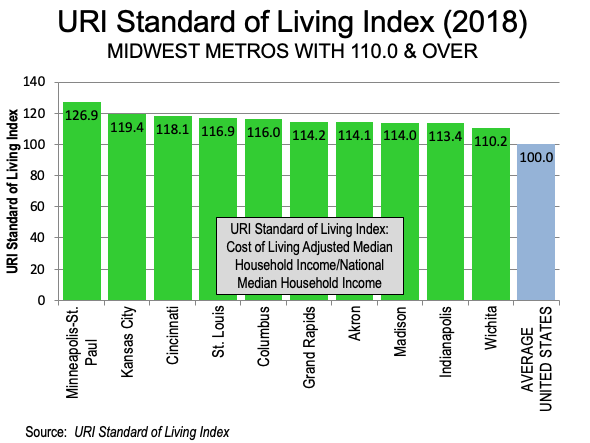
Intel announced plans to build two new semiconductor (chip) manufacturing plants in the Columbus, Ohio metropolitan area on January 21. In announcing the largest private-sector investment in Ohio history, CEO Pat Gelsinger told Time magazine (which managed an exclusive “scoop” on January 20). “We helped to establish the Silicon Valley,now we’re going to do the Silicon Heartland.” This will be the first Intel chip manufacturing plant in the Midwest.
The Intel Plants in New Albany
The plants will be located in the New Albany International Business Park, in the city of New Albany (Licking County). The business park already hosts Amazon, Google and Facebook as tenants.
Gelsinger told a White House event, hosted by President Joe Biden, that this will be the company’s first new manufacturing site in 40 years. The first phase will include two plants, to be opened by 2025, with the company occupying nearly 1,000 acres. This could be expanded ultimately to nearly 1,800 acres, including 250 acres for suppliers. Up to eight manufacturing plants would be built. Total spending In New Albany could be five times the initial commitment, $100 million in the first decade.
Governor Mike DeWine said that the plants are expected to employ 3,000 initially, at an average wage of $135,000, while secondarily generating 20,000 additional jobs statewide. The plants are projected to increase Ohio’s Gross Domestic product by $2.8 billion.
Intel Ohio Semiconductor Center for Innovation
In addition, Intel told Time that it will spend another $100 million over the next 10 years to establish the Intel Ohio Semiconductor Center for Innovation, a partnership with universities and community colleges to build semiconductor-specific curricula. One partner in this effort will be Ohio State University, which is building a new “innovation center” adjacent to its main campus in the city of Columbus.
Selection of New Albany
The competition for the investment was intense. According to Time: “The Ohio location, Mr. Gelsinger said, beat out roughly 40 other sites across the country to win the business. The region landed Intel’s investment, in part, by offering infrastructure upgrades, a massive space with room for expansion, and other incentives, he said.”
Indeed, the Columbus Dispatch quotes Governor DeWine, “There wasn't anything particularly special about the site. It was a site that could be assembled quickly," DeWine said. "It was a lot of land, and they wanted to have the assurance that they could grow if they needed to grow.”
Time notes “The choice of New Albany is a bet that after nearly two years of a global pandemic, Intel’s employees will embrace a suburban environment with reasonable home prices and good schools. (Zillow estimates the typical New Albany home is worth $516,752, about one-third the value of homes in Intel’s home base of Santa Clara, Calif.) The pandemic has hastened a move from urban locations to suburban places with more space.” Intel senior vice president Keyvan Esfarjani told Time: “It’s a place where a new college grad can come with a husband, or wife, or significant other, a kid, and they can build a life.”
New Albany and Metro Columbus
According to the 2020 census, New Albany had 11,000 residents. New Albany is located in Licking County, outside the Columbus Beltway (I-270), nearly 20 miles from the state capital in downtown Columbus (Franklin County).
The Columbus metropolitan area had a population of 2,139,000 according to the 2020 census. Columbus passed Cleveland in the 2010s to become Ohio’s second largest metropolitan area. Should growth trends of the last decade continue, Columbus would exceed the population of Cincinnati and become the state’s largest metropolitan area. Between 2010 and 2020, the Columbus metropolitan area population rose by 237,000, or 12.5%, ranked 20th among the 56 metropolitan areas with more than 1,000,000 population and the highest growth rate in the Midwest. Columbus was behind #19 Portland (12.9) and ahead of #21 Indianapolis (11.8%). Over the ten years Columbus also led all other Midwestern metros in both the number of net domestic migrants (53,000) and in relation to the population at the beginning of the decade (2.8%).
Prospects
The successful attraction of Intel could have a substantial longer-term growth impact on Ohio, the Columbus metropolitan area, and of course, New Albany. Certainly, the low cost of living of the metropolitan area, deriving from its comparatively low house prices was an important factor. With its higher than median household income, metro Columbus had the 21st highest standard of living among the 107 metropolitan areas with more than 500,000 residents. The Columbus 116.0 URI Standard of Living Index, compares to the 100.0 national average. A number of other Midwestern metros have generally competitive standards of living, which could improve their attraction of residents, business investment and job creation (Figure).

Wendell Cox is principal of Demographia, an international public policy firm located in the St. Louis metropolitan area. He is a founding senior fellow at the Urban Reform Institute, Houston, a Senior Fellow with the Frontier Centre for Public Policy in Winnipeg and a member of the Advisory Board of the Center for Demographics and Policy at Chapman University in Orange, California. He has served as a visiting professor at the Conservatoire National des Arts et Metiers in Paris. His principal interests are economics, poverty alleviation, demographics, urban policy and transport. He is co-author of the annual Demographia International Housing Affordability Survey and author of Demographia World Urban Areas.
Mayor Tom Bradley appointed him to three terms on the Los Angeles County Transportation Commission (1977-1985) and Speaker of the House Newt Gingrich appointed him to the Amtrak Reform Council, to complete the unexpired term of New Jersey Governor Christine Todd Whitman (1999-2002). He is author of War on the Dream: How Anti-Sprawl Policy Threatens the Quality of Life and Toward More Prosperous Cities: A Framing Essay on Urban Areas, Transport, Planning and the Dimensions of Sustainability.
Photo: Ohio State Capitol, Columbus (by author).













Minneapolis
Really that far ahead on 'standard of living' measure?